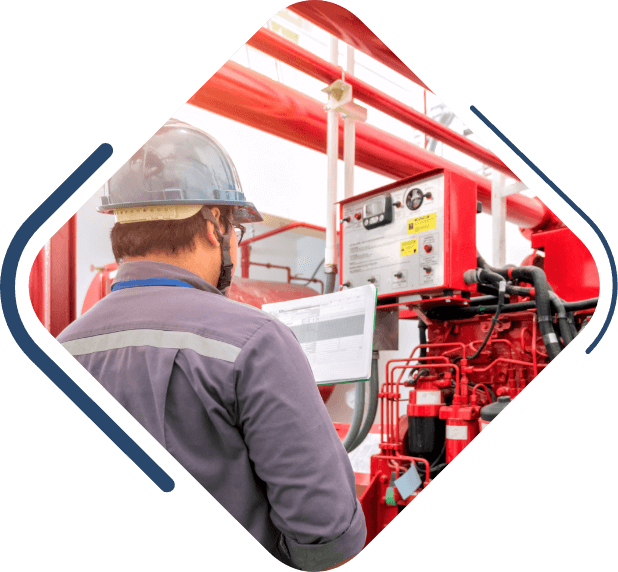Our Accreditations

Our Accreditations

Our Accreditations
and Certifications
Our Commitment to Quality
The importance of quality is a crucial factor in maintaining our certification for ISO 9001. Below you can view our Quality Statement and our ISO certification. In addition, we are also fully accredited with the Guaranteed Irish Program.
QUALITY POLICY
ISO 9001: 2015
Automatic undertakes contracts which involve providing products and systems which form an integral part of our customer’s fire and life safety systems. We have an in-house certified Quality Assurance System complying with the requirements of ISO 9001: 2015 which ensures that we achieve our policy of fulfilling our customers’ requirements:
ON-TIME; TO SPECIFICATION; AT AN AGREED PRICE.
We are committed to developing Automatic to its full potential and for enhancing the quality of service we provide to our customers. We will do this in part by adopting the best of industry working practices and employing the latest design and manufacturing technology.
We are committed to ensuring quality for our customers by adopting, implementing and achieving the requirements of ISO 9001: 2015.
Our Board of Directors fully endorses this policy and will support all who implement it.
Fire Safety Guidelines
Over 90% of fires in Irish workplaces are caused due to human error. Recent research shows that up to 80% of all businesses that experience a large fire never reopen. Fire can and does destroy lives and businesses.
Under the Safety, Health and Welfare at Work Act 2005, an employer must carry out risk assessments, including assessing fire risks. The Health and Safety Authority in Ireland (HSA) define a risk assessment as “a written document that records a three-step process: Identifying the hazards in the workplace(s) under your control. Then one has to assess the risks presented by these hazards and then putting control measures in place to reduce the risk of these hazards causing harm”.
A fire safety risk assessment should include:
1. Fire Detection and Warning – S 3218
What Is I.S 3218?
I.S 3218 is a code of practice for fire detection and alarm systems for buildings – system design, installation and services introduced in 1989. This certificate is the standard and legal requirement for fire alarm systems in Ireland, covering commercial and domestic systems.
If you are responsible for providing a safe workplace and have public traffic, you must ensure you have installed a fire alarm system.
Why Is It Important?
Not only is I.S 3218 a legal obligation, installing effective automatic fire detection and alarm systems can allow people to assess the level of structural fire protection required when planning out escape routes. This practice can provide a more cost-effective and suitable fire precaution.

2. Fire Prevention – 3218:1989
What Is 3218:1989?
This certificate encompasses recommendations for planning, designing, installing, commissioning, and servicing fire detection and alarm systems in and around buildings. The legislation covers systems ranging from simple installations with one or two manual call points, complex installations with automatic detectors, manual call points, control and indicating equipment, connection to the public fire service, etc.
The code of practice for alarm systems and fire detection for buildings – system design, installation and servicing is part of the Occupational Health & Safety Act.
Why Is It Important?
This is a legal requirement under the code of practice for fire detection and alarm systems for buildings – system design, installation and servicing.
Under Section 19 of the Safety, Health and Welfare at Work Act 2005 every employer must assess risks, identify hazards and have a written risk assessment including any unusual or other risks. To comply with Section 19, employers must carry out risk assessments and record these in the Safety Statement. A fire risk assessment should be conducted.
3. Sprinkler Installation And Maintenance – BS EN 12845
What Is BS EN 12845?
The BS EN 12845 is part of the European Standard which specifies requirements and gives recommendations for the design, installation and maintenance of all industrial and commercial sprinkler systems. These systems require additional safety measures to ensure the system has the necessary degree of reliability and responsiveness for life safety. The areas it covers are:
Water Supplies
The system should have at least one single water supply. This provision ensures high levels of reliability. Where pumps are required, two or more must be provided – with no more than one driven by an electric motor.
Wet Pipe Installation
To ensure fast application of water and early fire suppression, sprinkler installations for life safety should be a wet pipe type and any subsidiary dry pipe or extension must comply with 11.5”.
Control Valve Arrangement
During maintenance and service of the installation alarm valves, the sprinkler installation must be fully operational in all aspects.
Zones Subdivision
Installations must be subdivided into zones with a maximum of 200 sprinklers per zone.
Sprinkler Type And Sensitivity
Quick response sprinklers must be installed, except that standard ‘A’ and special response may be used in areas less than 500mÇ or no less than 5m in height.
BS EN 12845 also requires a quarterly inspection of sprinkler heads, pipework and pipe supports, and suggest that a flow test be carried out on the water supplies.
Why Is It Important?
To review the hazards and ensure that there have been no changes of structure, occupancy, storage configuration, heating, lighting or other factors that would alter the hazard classification of the risk or affect the installation in any way. Routine inspections also prevent blocked or corroded sprinkler heads to ensure they operate efficiently and successfully operate.